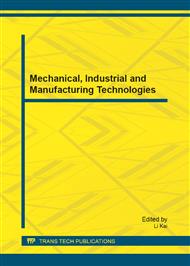p.58
p.63
p.68
p.74
p.80
p.87
p.95
p.103
p.109
Comparing of the Welding Atmosphere Moisture Effect on Hydrogen Distribution in TI-6AL-4V, Pure Commercial Titanium and TI-15V-3CR-3SN-3AL Weld Joints
Abstract:
Welding-titanium and titanium alloys must be performed with special precautions because these materials are very reactive to contamination from atmosphere gases. One of the important technological considerations in welding titanium and its alloys is protection of the molten weld pool and HAZ from atmospheric gases such as nitrogen, oxygen, carbon dioxide and moisture and contamination. Absorption of the atmospheric gases affects the mechanical and metallurgical properties and may cause embrittlement, lake of fatigue strength and hydrogen cracking of titanium welds. In this paper, the effect of welding atmosphere moisture on hydrogen absorption and distribution in Ti-6Al-4V, pure titanium and TI-15V-3CR-3SN-3AL TIG welds has been studied. The experimental results indicated that hydrogen distribution which was symmetrical with respect to the weld axis had maximum and minimum points. It was also observed that heat treating the joints after welding resulted in reduction of the magnitude of the maximum and minimum points as well as redistributed the hydrogen in the welds in such a way that the distance of the maximum and minimum points got farther from the weld axis. This distribution is affected by type of titanium alloy and degree of annealing .in this investigation we used vacuum welding chamber with TIG welding apparatus and a special metal sampling and composition detecting systems for joining the samples and detecting the amount of hydrogen in the weld metal .the aim of this investigation was to increase the level of our knowledge about harmful effect of diffusion the hydrogen in the different titanium alloys. Introduction
Info:
Periodical:
Pages:
80-84
Citation:
Online since:
June 2012
Authors:
Price:
Сopyright:
© 2012 Trans Tech Publications Ltd. All Rights Reserved
Share:
Citation:


